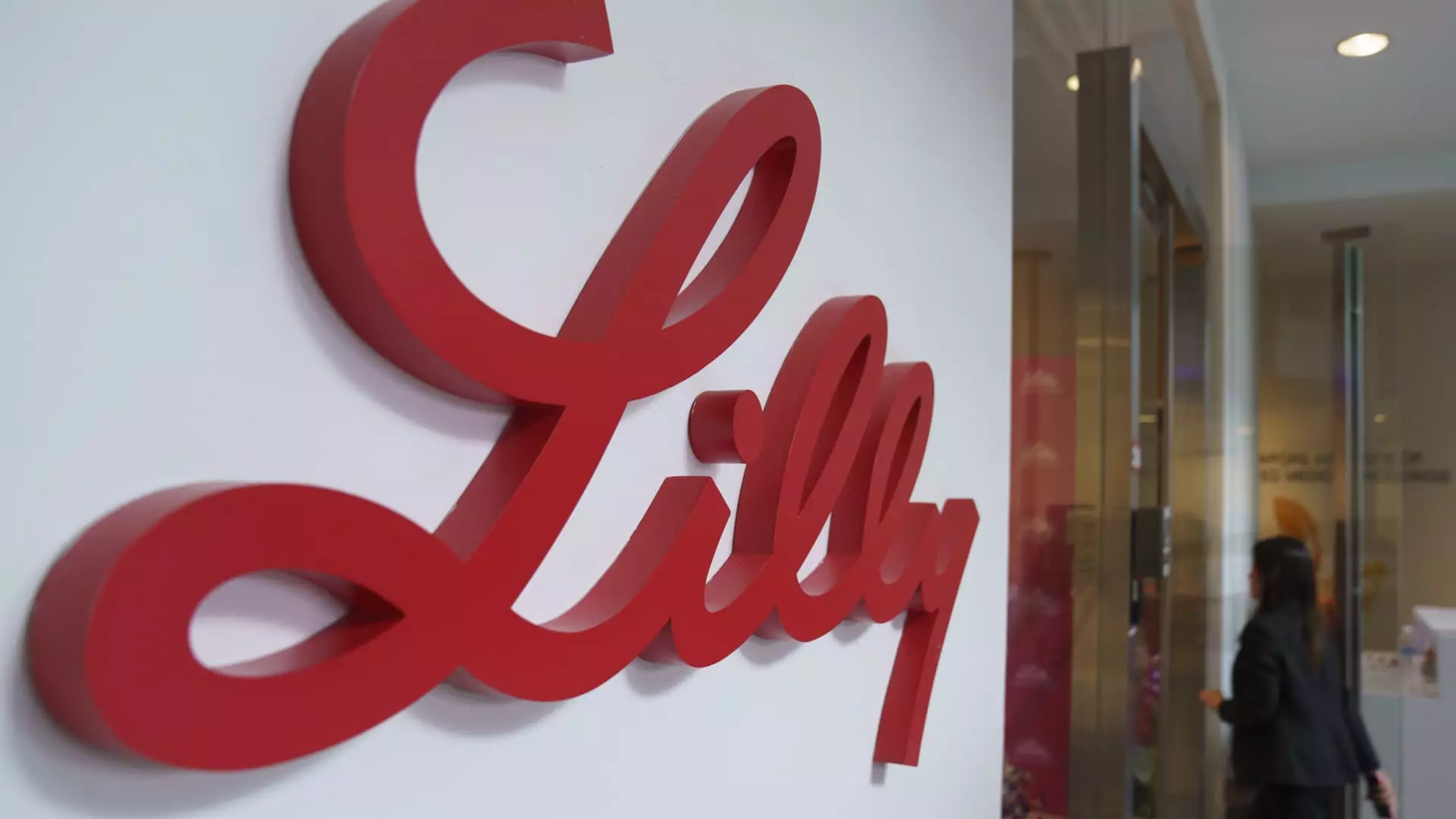Eli Lilly has just unveiled its first-quarter results, painting a contrasting picture of triumph and caution. With a staggering revenue increase that reached $12.73 billion—an impressive 45% rise from last year—it’s hard not to celebrate this moment for the pharmaceutical giant. The company’s share of the diabetes drug market, particularly with its blockbuster products, Mounjaro and Zepbound, has exceeded expectations. The sales from Mounjaro alone skyrocketed, generating a phenomenal $3.84 billion, reflecting a jaw-dropping 113% increase compared to the same period last year. In a sector where growth can often be sluggish, Eli Lilly’s performance demonstrates not just momentum but the capability to capitalize on emerging health trends.
However, just as sunshine brings warmth, it can also cast shadows. The company has substantially lowered its fiscal 2025 earnings guidance, now estimating adjusted earnings per share between $20.78 and $22.28, down from an initial expectation of $22.50 to $24. A sharp eye can discern that this downward shift is tied to a hefty $1.57 billion charge incurred due to the acquisition of a cancer treatment from Scorpion Therapeutics. While this strategic move may bear fruit in the long run, the immediate financial implications raise a critical question: can one still bask in the glow of strong sales if significant charges derail profit expectations?
Insider Commentary: The CEO’s Perspective on Tariffs and Manufacturing
In a candid interview with CNBC, CEO Dave Ricks shed light on Eli Lilly’s future trajectory. His remarks echoed a sentiment often heard in corporate circles but rarely without skepticism: tariffs can bring back production. Ricks asserted that the looming threat of tariffs has already prompted essential supply chains to shift back to the United States. This notion seems implausibly optimistic, bordering on naive when considering the complexities of global trade and manufacturing. The pharmaceutical industry is intricately woven into a fabric of international dependencies that tariffs cannot easily unravel.
Yet Ricks does have a point in arguing for lower corporate tax rates—which have long propelled drug manufacturers to offshore production to low-tax havens like Ireland and Switzerland. Striking a careful balance between incentivizing domestic production and acknowledging the realities of a global market is essential. If the U.S. sees no economic incentive for manufacturing, Eli Lilly and similar companies may simply pivot back to the familiar, yet contentious, landscape of overseas production. Thus, while ambitious ideas about tariffs may serve as talking points, the practical execution may rest on more nuanced fiscal policies that stimulate genuine domestic growth.
The Dilemma of Supply vs. Demand
As the demand for Zepbound and Mounjaro continues to soar, Eli Lilly finds itself amidst a paradoxical dilemma of scarcity. Despite significant revenue gains, the company is experiencing an overwhelming demand that far exceeds supply. This mismatch not only constrains sales potential but threatens to undermine the company’s hard-earned reputation among healthcare providers and consumers alike. The FDA’s decision in December to declare the U.S. shortage of tirzepatide resolved does offer a glimmer of relief, barring compound pharmacies from producing cheaper, unapproved alternatives. Yet, the specter of future supply chain issues looms ominously over the company.
This urgent need to ramp up manufacturing capacity can be seen as a double-edged sword. On one hand, investment in production capabilities signifies a commitment to meeting patient needs—an ethos essential for any healthcare company. On the other hand, it strains financial resources and can lead to operational hiccups. Is Eli Lilly prepared to accept the risks associated with expanding production? Will the nursing of short-term pains secure long-term gains? Industry observers are wise to question whether Eli Lilly can navigate this volatility without sacrificing ethical standards.
The Broader Implications for the Pharmaceutical Industry
Eli Lilly’s quarter has certainly set the stage for critical conversations about the future of the pharmaceutical industry. The nexus of rising demand, ongoing tariff discussions, and aggressive investment in production sheds light on the directions this sector may take. Companies like Eli Lilly face a complex web of regulatory challenges intertwined with global politics. Reduced corporate taxes and repatriated manufacturing may create a favorable environment, but will it be sustainable in an ever-evolving market landscape?
The need for ethical responsibility looms large. While competitive pressures may push pharmaceutical giants to cut corners, the industry must remember that its ultimate objective is not just profit, but improved patient outcomes. Empowering innovation while safeguarding ethical considerations may well draw the blueprint for a healthier future in healthcare. This balance—seeking profitability without compromising the foundational tenets of care—might just be the prescription needed for sustained success in the pharmaceutical industry.

